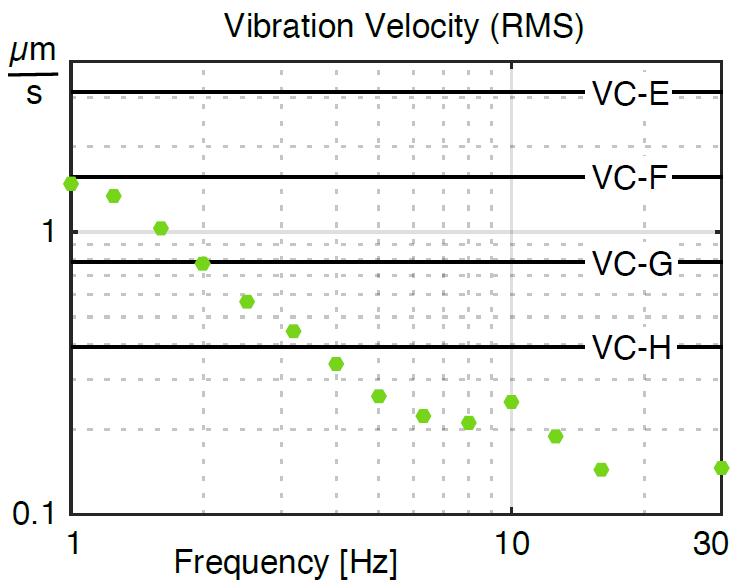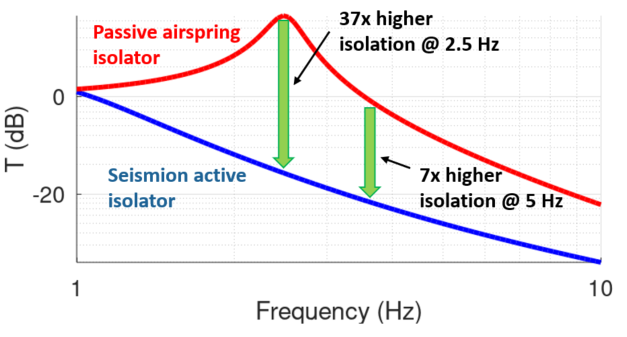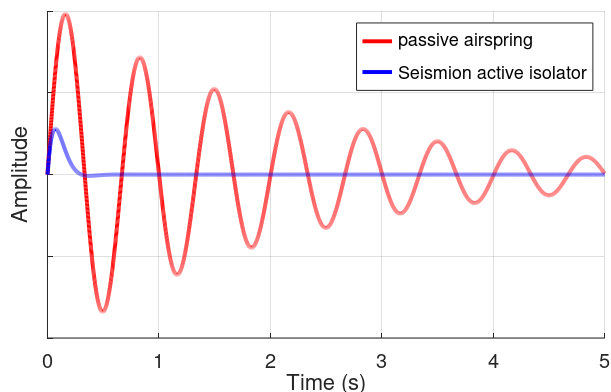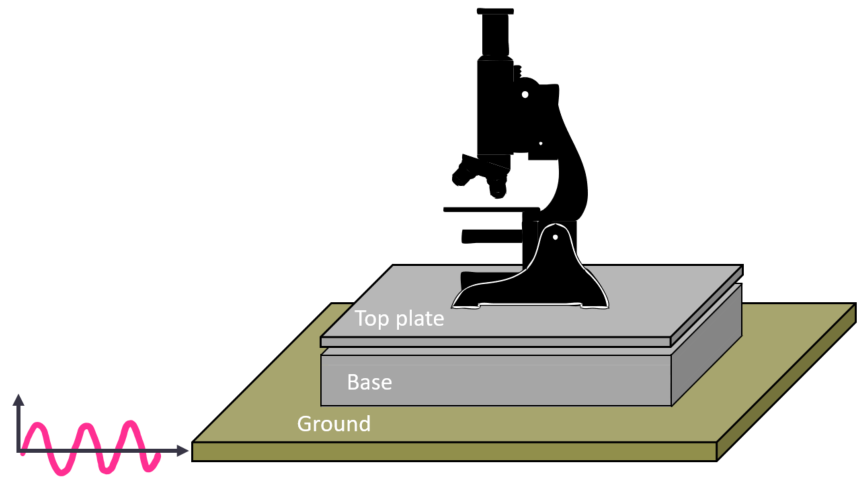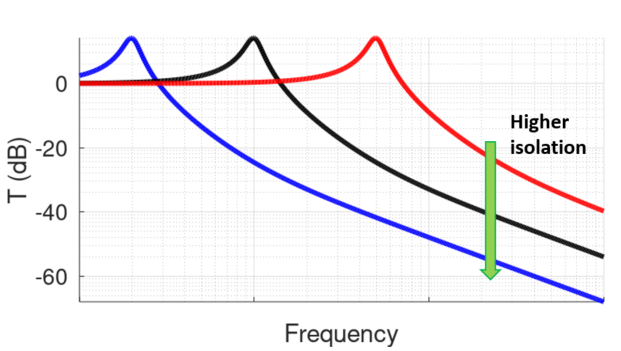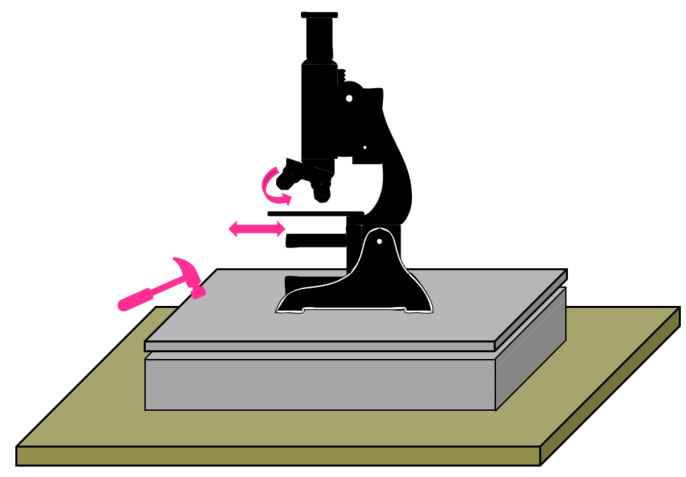How Seismion evaluates the performance of the vibration isolators by transmissibility measurements
The previous acticle has considered modeling aspects for optimizing the performance of active vibration isolators. But equally important is the test under real conditions. For this part, we at Seismion have developed our own measurement kit. It consists of two sensor units, that both detect vibrations in vertical and horizontal direction. These signals are processed in the frequency domain, and the vibration spectra of each of the four sensors are determined.
Subsequently, the transmissibility is calculated as the ratio of top-plate spectrum divided by base spectrum, both for vertical and horizontal directions. The following is a screenshot of our program, which in real-time displays the spectra and transmissibilities.

The top figure displays the 4 spectra of the sensors. It can be seen that there is a growing gap between the two sensors placed on the base (S2) and the two placed on the isolated top-plate (S1). This difference is exactly the reduction caused by the isolator, which reaches up to -30 dB in this example.
It is important to mention, that we are measuring the transmissibility without artificial shaker excitation, like it is normally done. Instead, we simply place the vibration isolator on a rigid table, which only receives the ambient vibrations as in a typical laboratoriy environment. In this way, we are measuring the isolation performance as it really matters for the end-user, and not with an artificial excitation which might be best suited to show the performance the isolator.
Based on these measured spectra, one can also realize the importance of low-frequency isolation. The largest vibration amplitudes in this measurement are located in the range 1-10 Hz, with an distinct peak at 10 Hz, after which it is strongly reduced. The 10 Hz is most likely the resonance of the table where the isolator is placed on. Therefore, the isolation performance is most urgently needed below 10 Hz. This is the range where active isolators outperform air spring isolators the most.
Comparison with the calculated transmissibility curve shows a very good agreement, which validates our computer model. In the above example it can be noticed that the measured transmissibilities are rising for higher frequencies approximately above 30 Hz. This is not the actual performance of the isolator, but it is caused by the noise floor of the sensors. Since the sensors on the top-plate receive much less vibration signal due to the isolation, the remaining signal is dominated by the noise.
To emphasize this, the noise limit of the sensors are included in the upper window. It can be seen that the measured spectrum approaches this noise floor, but does not go below it. Since the spectrum of base excitation gets smaller for high frequencies, the gap between these spectra is eventually diminished to zero, which is interpreted as transmissibility of the isolator, but in fact here is due to the sensor noise.
Repeating the same measurement with a stronger excitation will result in a different (better) transmissibility, since the noise floor is not reached that soon.
The Seismion measurement box of course can also be used to evaluete different placements of the isolator and the application, and choose the one with lowest excitation level.

